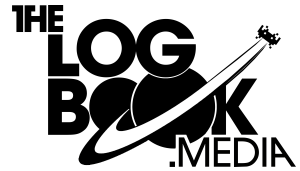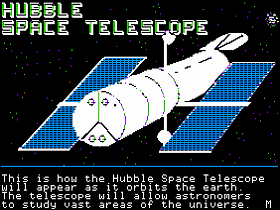 The Game: Well, it’s not really a game. A NASA-published electronic press kit walks you through the basics of the then-upcoming Hubble Space Telescope, from its impending launch aboard the Space Shuttle to how it collects and transmits images. Thanks to a problem with its optics, it would be a few years before the Hubble Telescope, launched in 1990, would begin to fulfill the hype surrounding it. (NASA, 1989)
The Game: Well, it’s not really a game. A NASA-published electronic press kit walks you through the basics of the then-upcoming Hubble Space Telescope, from its impending launch aboard the Space Shuttle to how it collects and transmits images. Thanks to a problem with its optics, it would be a few years before the Hubble Telescope, launched in 1990, would begin to fulfill the hype surrounding it. (NASA, 1989)
Memories: Created and published in 1989, months before the Shuttle mission that lifted Hubble into orbit, this interactive guide to the next big thing in astronomy made the rounds.
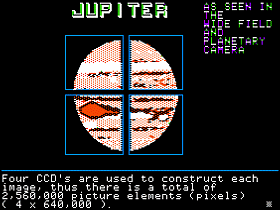 Presumably this was distributed to educational institutions and other very interested parties; the internet existed only in the world of academia in 1989, and as for distributing it via bulletin boards, 14.4 and 28.8kbps modems were significant steps up from the earlier standards of 300, 1200, 2400 and 9600 baud, but it still would’ve been prohibitively slow.
Presumably this was distributed to educational institutions and other very interested parties; the internet existed only in the world of academia in 1989, and as for distributing it via bulletin boards, 14.4 and 28.8kbps modems were significant steps up from the earlier standards of 300, 1200, 2400 and 9600 baud, but it still would’ve been prohibitively slow.
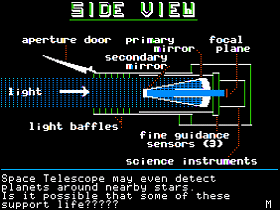 One endearing little time capsule in this piece of software is the mention of Hubble detecting exoplanets beyond the solar system, followed by a question of whether these worlds could support life. Exoplanet detection as a science rather than happenstance didn’t happen until the launch of NASA’s Kepler Space Telescope in 2009, and 21st century NASA seems to have cooled its jets on postulating life beyond Earth.
One endearing little time capsule in this piece of software is the mention of Hubble detecting exoplanets beyond the solar system, followed by a question of whether these worlds could support life. Exoplanet detection as a science rather than happenstance didn’t happen until the launch of NASA’s Kepler Space Telescope in 2009, and 21st century NASA seems to have cooled its jets on postulating life beyond Earth.
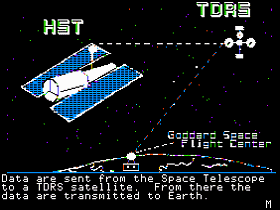 For perspective: the Apple II series of computers were on their way out when the Hubble Space Telescope finally tasted space. Now Hubble is a quarter of a century old (though it was approved in 1977, the year the Apple II was launched). Much like the Apple II line in 1989, Hubble is due for replacement soon by the larger James Webb Space Telescope, but is still managing to surprise its operators with new capabilities and discoveries.
For perspective: the Apple II series of computers were on their way out when the Hubble Space Telescope finally tasted space. Now Hubble is a quarter of a century old (though it was approved in 1977, the year the Apple II was launched). Much like the Apple II line in 1989, Hubble is due for replacement soon by the larger James Webb Space Telescope, but is still managing to surprise its operators with new capabilities and discoveries.
